Classroom routines are a great way to help young children learn classroom expectations and create a positive classroom climate for learning. I think the best time to teach classroom procedures and routines is at the beginning of the school year, but it’s never too late!
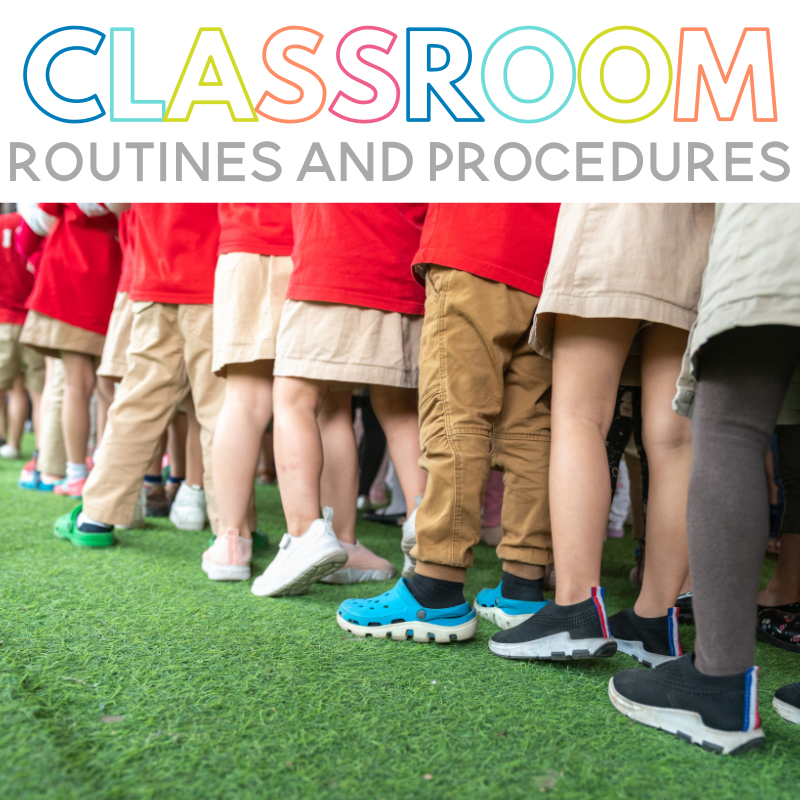
This post will walk you through classroom routines to consider in your preschool or kindergarten classroom.
What are classroom routines?
Classroom routines are structured and predictable sequences of activities that help establish a sense of order, consistency, and organization within an educational setting. These routines play a fundamental role in preschool and kindergarten classrooms, providing young learners with a sense of security and stability.
They typically involve various daily routines, such as morning greetings, circle time, transitions between lessons, snack and lunchtime, playtime, and end of day reflections. Classroom routines can involve the entire grade level, the entire class, or even just small groups of students.
Why are classroom routines important?
By establishing and following these routines, teachers create a conducive learning environment where students know what to expect, understand the flow of the day, and feel more comfortable exploring, engaging, and participating actively in their educational journey.
Classroom routines not only support academic learning but also foster social and emotional development, helping children build essential skills. Classroom routines also promote effective classroom management and limit disruptive behavior. Behavior problems often happen when students don’t know what is expected of them.
What are some examples of classroom routines?
Examples of routines will look different in every elementary school classroom. However, here are some common routines and procedures to think about planning for your own classroom.
Beginning of Class Routines
For most teachers, the beginning of the day is a very busy time so a morning routine is crucial for students! At the start of the day, students should know exactly what is expected of them are where to put their items including their backpacks, lunches, jackets, etc. when they arrive.
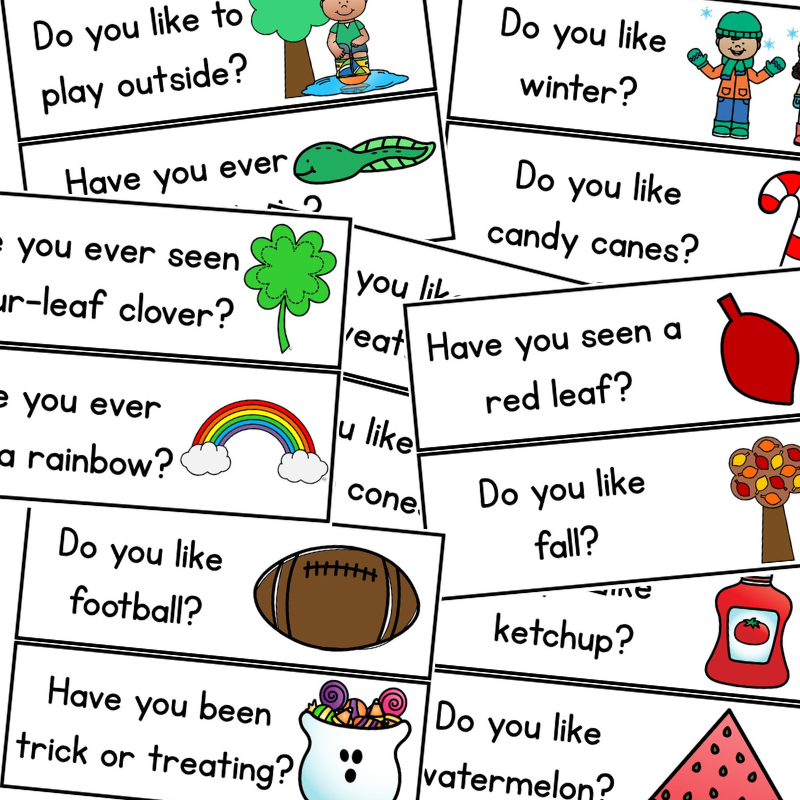
This is a great time of day to have students answer a question of the day or even complete independent morning work at their seats.
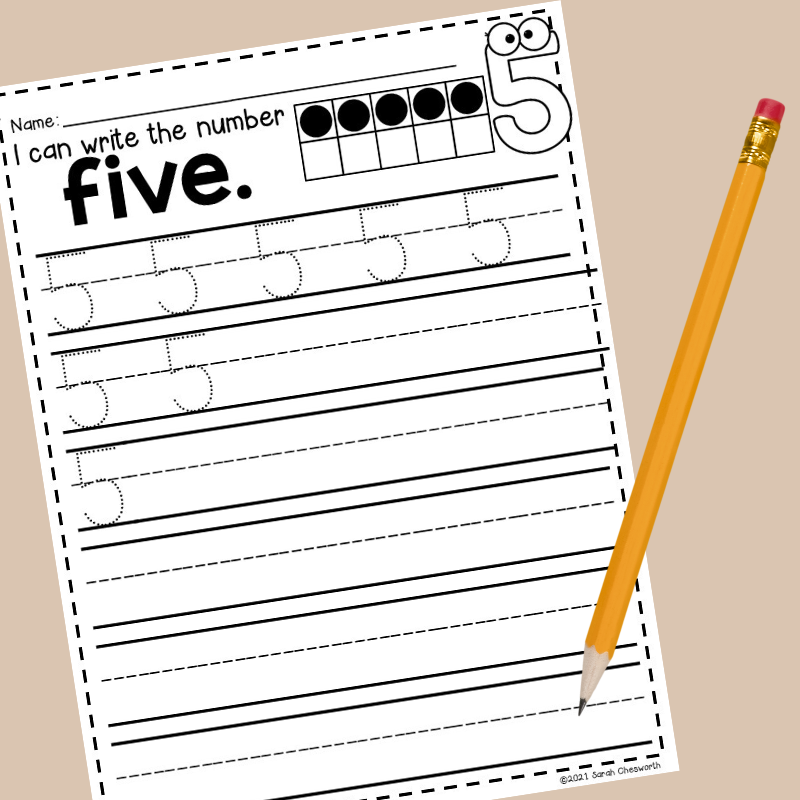
Some teachers also like their students to include hand washing in this part of the daily schedule so they know that students are starting the day with clean hands.
Morning Greeting or Circle Time
A morning meeting or circle time is a great way to start the school day and foster a classroom community. Classroom routines should be built around this important part of the day. Here are a few things to think about when planning your morning meeting:
- Where should students sit?
- How do they know when it’s time to gather?
- What are the behavior expectations during this class time?
- What is the order of activities?
- Does your school have announcements that will be included at this time?
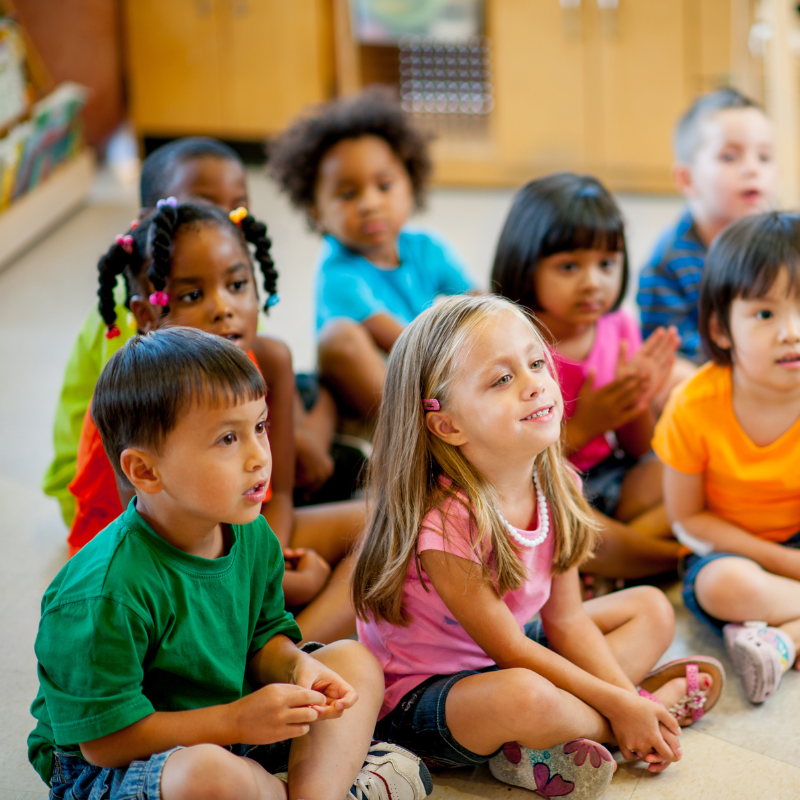
Classroom Transition Routines
Establishing smooth transitions between activities, such as moving from circle time to centers or from playtime to a learning activity, will help to maintain a well-organized classroom environment.
In my own classroom, I like to use music to help with transition times. Students know that when a song begins that they need to start cleaning up and that when the the song ends they should be sitting on their carpet spot ready to listen to directions.
Learning songs are a perfect tool for transitions. Students can sing along with the alphabet, counting or even sight words.
Leaving the Classroom Routines
Sometimes students will leave the classroom individually to walk to the nurse’s office or go to the bathroom. Other times the class will leave the classroom together as a group to eat lunch in the cafeteria or visit the art room.
A set routine is very important for leaving the classroom to ensure student safety and ensure that the teacher knows where all students are at all times.
Many teachers use hand signals for students to communicate their needs to leave the classroom. For example, showing the letter “R” in sign language communicates that a student needs to visit the restroom.
Line Up Procedures
When students leave the classroom as a group, they will usually be expected to travel in a single file line. An organized procedure for students to line up is critical for ensuring safety and order.
Class jobs can also be helpful for setting up these classroom procedures. For example, if one student’s job is to be the line leader then this will never be a behavior management issue. Another student could also serve as the door holder or caboose. Class jobs should be rotated throughout the school year so every child has a turn.
Centers and Playtime
During the day preschool and kindergarten students will learn and explore in different learning centers or areas. It’s important to set up classroom procedures and routines around these times especially since different groups of students may be doing different things.
Even if the task changes each day, the routine can be the same. For example, students Here are a few things to think about:
- What centers will be in my classroom?
- Where will center materials be stored?
- Will any technology be included in classroom centers? If so, how will these items be charged?
- How much time will be needed to clean up these centers?
- What should students do if there is a problem will center materials? Is there a place for torn book to go, etc?
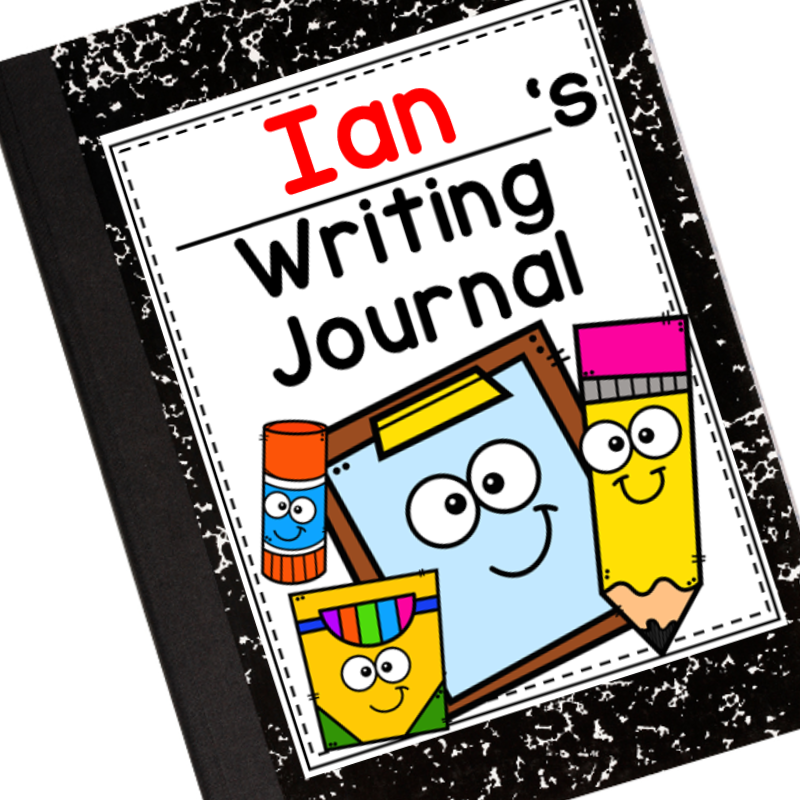
Clean-up Time
A clean-up routine is one of the most important successful classroom routines. This helps students to feel a sense of responsibility for the classroom. Clear systems should be present for students to be successful and know what to do!
For younger students, whole-class storage solutions tend to be more helpful than individual desk storage. It’s much easier for all students to keep their writing journals in the classroom writing journal bucket than having to keep them in their desks.
Students should definitely be responsible for helping care for and clean up after daily activities in the elementary classroom., but make sure and set up classroom procedures to help them be successful.
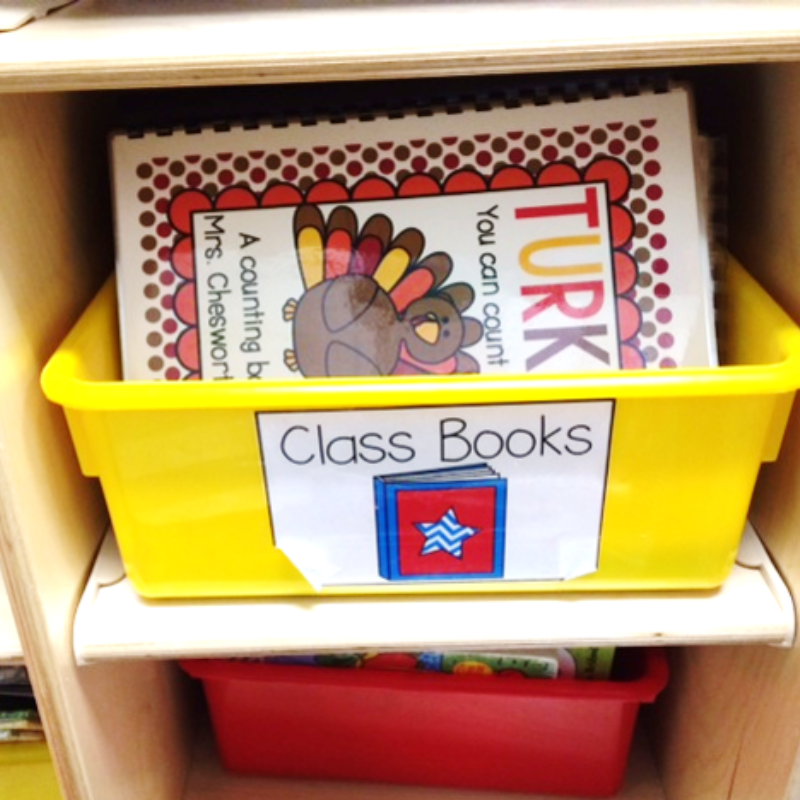
If you want to learn more about creating class books with your class check out this post, Class Books to Make in Kindergarten.
End of the Day Routines
End of the day routines will be strongly influenced by your school’s procedures and how your students get home at the end of class.
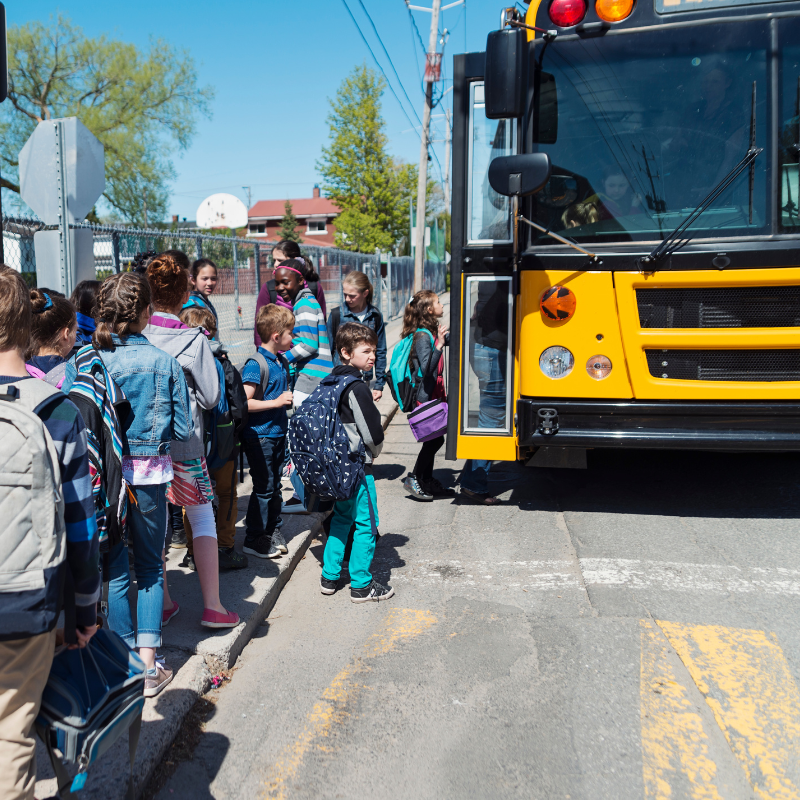
Different schools manage daycare transportation, bus riders, and carpool lines differently so talk to someone (especially if it’s your first year at a campus) about how these things are handled. Here are a few things to consider when planning your end of the day routines:
- How do students get home and where do each of these groups go at the end of the day?
- What items do students need to take home each day?
- What duties do I have after school?
- Are there any jobs that students could help with to prepare for the next day like passing out independent work or pencil sharpening at the pencil sharpener?
- Do students need to stack chairs on their desks for cleaning?
By incorporating these classroom routines, teachers create a structured and nurturing learning environment that supports children’s academic, social, and emotional growth while promoting a positive and enjoyable classroom experience.
FAQ About Classroom Procedures and Routines
When should you begin classroom routines?
Classroom routines can begin on the first day of school or anytime during the first week of school. Setting these new routines at the beginning of the year is the best way to help students learn expectations and learn what they can expect each day at school.
How do I manage transitions between activities to maintain a smooth flow in the classroom?
Establish Clear Expectations
Communicate clear and concise instructions to your students before each transition. Let them know what is expected of them, where they need to be, and what materials they may need for the upcoming activity.
Use Visual Supports
Incorporate visual cues such as a timer, a countdown clock, or a visual schedule to help students understand the timing and sequence of transitions.
Signal Transitions
Use consistent signals or cues to indicate the beginning and end of an activity. For example, you can use a chime, a song, or a special sound that students associate with transitioning to the next task.
Practice Transitions
Take time to practice transitions with your students until they become familiar with the routine. Encourage them to transition quietly and efficiently. After a long break from school, it can be really helpful to practice transitions again too.
Encourage Student Responsibility
Assign specific tasks to students during transitions, such as passing out materials or setting up the next activity. This fosters a sense of responsibility and ownership in the process.
Incorporate Movement
Use movement to facilitate transitions when appropriate. For instance, you can have students stand up and stretch before moving to the next activity.
Be Positive and Encouraging
Praise students who transition smoothly and follow expectations. Positive reinforcement can motivate them to continue with good behavior during transitions.
Plan Ahead
Prepare materials and set up the classroom in advance to minimize downtime between activities. Being organized and ready for each transition will help things run more smoothly.
Transitional Activities
Have a few quick and engaging transitional activities on hand for times when you need to fill a short gap between activities. Read-alouds are a great option.
Be Flexible
Sometimes unexpected things happen, and transitions may not go as planned. Stay flexible and adapt as needed while maintaining a calm and positive demeanor.
Remember that consistency is key when managing transitions. With patience, practice, and a supportive classroom environment, your students will get the flow of the classroom transitions!
What do I do if classroom routines aren’t going well?
Have a classroom check-up a few weeks into the school year and make notes about what is working and what isn’t. Classroom routines and procedures should be an effective way to manage your classroom, so if they aren’t try something new. You can also include your students in these discussions and take their observations into consideration.
Classroom Routines: Final Thoughts
In conclusion, as preschool and kindergarten teachers, implementing effective classroom routines is a cornerstone of creating a thriving and harmonious learning environment for our young students. By understanding the significance of these routines and incorporating them thoughtfully into our daily schedule, we can foster a sense of structure, predictability, and security that children crave during their early years of education.
